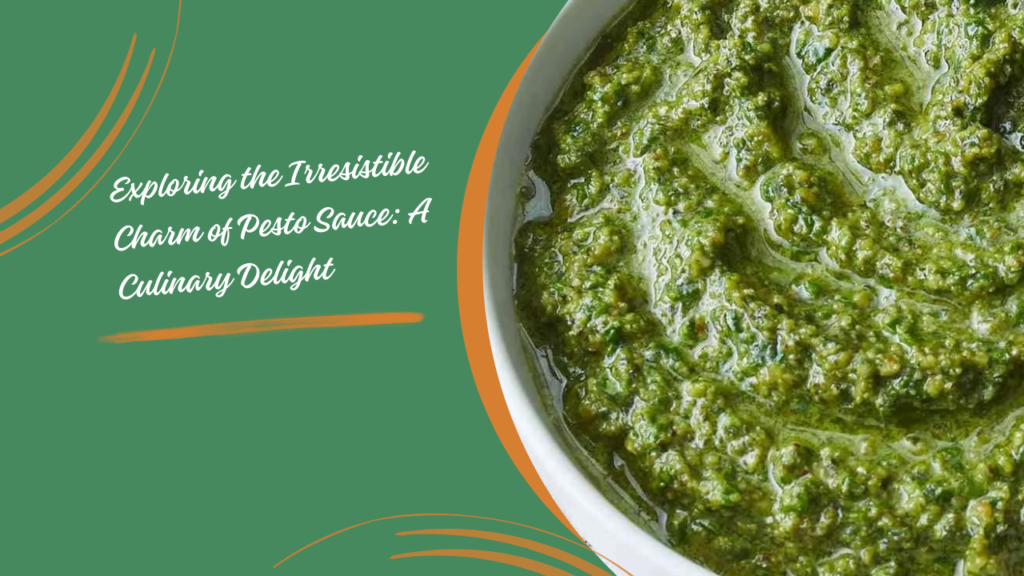Introduction:
In the realm of culinary delights, few things can match the vibrant, aromatic, and utterly irresistible charm of pesto sauce. Originating from Italy, this verdant blend of fresh basil, pine nuts, garlic, Parmesan cheese, and olive oil has become a beloved staple in kitchens worldwide. Its versatility, simplicity, and burst of flavor make it a favorite among chefs and home cooks alike. Let’s delve into the rich history, delightful flavors, and versatile uses of this culinary gem.
A Brief History:
Pesto sauce traces its roots back to the Liguria region of northwest Italy, particularly the city of Genoa. The word “pesto” itself is derived from the Italian word “pestare,” meaning to crush or pound, which refers to the traditional method of preparing the sauce using a mortar and pestle. The earliest known recipe for pesto can be found in the 19th-century cookbook “La Cuciniera Genovese” by Giovanni Battista Ratto, highlighting its long-standing presence in Italian cuisine.
Ingredients and Preparation:
One of the distinctive features of pesto sauce is its simple yet harmonious combination of ingredients. Fresh basil leaves form the base of the sauce, providing its signature aroma and flavor. Alongside basil, pine nuts lend a nutty richness, while garlic adds depth and pungency. Parmesan cheese and olive oil bind the ingredients together, creating a creamy and luscious texture.
Traditionally, pesto sauce is prepared using a mortar and pestle, which allows for the gentle crushing of basil leaves and other ingredients, preserving their essential oils and flavors. However, modern kitchens often employ blenders or food processors for convenience, resulting in a smooth and vibrant green sauce in a fraction of the time.
Flavor Profile and Versatility:
The beauty of pesto sauce lies in its versatility. Its vibrant green hue and bold flavors can elevate a myriad of dishes, from pasta and pizza to sandwiches and salads. The fresh, herbaceous notes of basil are complemented by the richness of Parmesan cheese and the earthy crunch of pine nuts, creating a symphony of flavors that tantalize the taste buds.
Pesto sauce pairs exceptionally well with pasta, coating each strand with its velvety texture and aromatic essence. It serves as a delightful accompaniment to grilled meats and seafood, adding a burst of freshness to every bite. Spread it on sandwiches or wraps for a flavorful twist, or drizzle it over roasted vegetables for an extra layer of indulgence.
Health Benefits:
Beyond its exquisite taste, pesto sauce also offers a range of health benefits. Basil, the primary ingredient in pesto, is rich in essential nutrients such as vitamin K, vitamin A, and antioxidants. Olive oil, another key component, is renowned for its heart-healthy monounsaturated fats and anti-inflammatory properties. Additionally, pine nuts provide an excellent source of protein, healthy fats, and essential minerals.
Conclusion:
In conclusion, pesto sauce stands as a shining example of culinary excellence, celebrating the vibrant flavors of fresh ingredients in a harmonious blend. Its rich history, delightful flavors, and versatile uses have cemented its status as a beloved staple in kitchens around the world. Whether tossed with pasta, spread on bruschetta, or used as a marinade, pesto sauce never fails to delight the senses and evoke the true essence of Italian cuisine. So, the next time you crave a taste of culinary perfection, reach for a jar of pesto sauce and let its irresistible charm transport you to the sun-drenched hills of Italy.
Read Also:- A Classic Rice Pudding Recipe

